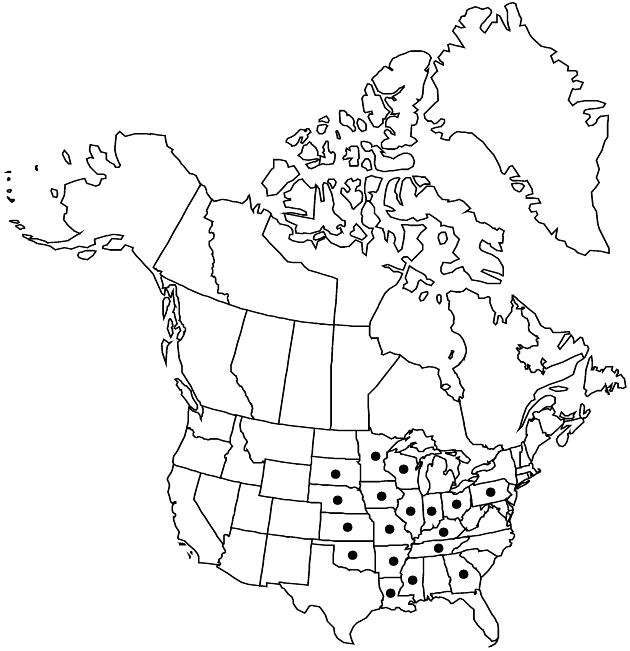Difference between revisions of "Prenanthes aspera"
Fl. Bor.-Amer. 2: 83. 1803.
FNA>Volume Importer |
FNA>Volume Importer |
||
| Line 51: | Line 51: | ||
|publication year=1803 | |publication year=1803 | ||
|special status= | |special status= | ||
| − | |source xml=https://jpend@bitbucket.org/aafc-mbb/fna-data-curation.git/src/ | + | |source xml=https://jpend@bitbucket.org/aafc-mbb/fna-data-curation.git/src/f50eec43f223ca0e34566be0b046453a0960e173/coarse_grained_fna_xml/V19-20-21/V19_362.xml |
|tribe=Asteraceae tribe Cichorieae | |tribe=Asteraceae tribe Cichorieae | ||
|genus=Prenanthes | |genus=Prenanthes | ||
Revision as of 20:17, 16 December 2019
Plants 35–170 cm; taproots fusiform, thickened, tuberous, with smaller lateral roots. Stems erect, green and mottled purple, glabrous proximally, midstems hispid or setose, scabrous to coarsely setose distally. Leaves: proximalmost usually withered by flowering; petiolate (midcauline sessile, clasping); blades spatulate, 4–11 × 2–5 cm, firm, coriaceous, brittle, bases attenuate, margins entire or weakly dentate, apices acute to obtuse, faces glabrate to roughly hispid abaxially; distal reduced. Heads in erect, racemiform or narrowly paniculiform arrays. Involucres cylindric to campanulate, 12–17 mm. Calyculi of 6–12, green, triangular to lanceolate bractlets 2–5 mm, coarsely setose. Phyllaries 6–10, yellow green to tan, linear-lanceolate, 8–15 mm, coarsely setose. Florets 8–19; corollas pale yellow to creamy white, 9–17 mm. Cypselae tan, subcylindric, subterete, 5–6 mm, irregularly 10–12-ribbed; pappi pale yellow or brown, 7–8 mm. 2n = 16.
Phenology: Flowering Aug–Oct.
Habitat: Tall-grass prairies, dry prairies, dry rocky woods
Elevation: 50–600 m
Distribution

Ark., Ga., Ill., Ind., Iowa, Kans., Ky., La., Minn., Miss., Mo., Nebr., Ohio, Okla., Pa., S.Dak., Tenn., Wis.
Discussion
Prenanthes aspera is easily recognized by its narrow, erect habit, unlobed, spatulate, weakly dentate leaves, basal leaves withered by flowering, heads in narrow, spiciform arrays, and densely setose phyllaries. The distribution closely matches that of the tall grass prairie, and like undisturbed prairies, this species is now rare or endangered in some states.
Selected References
None.